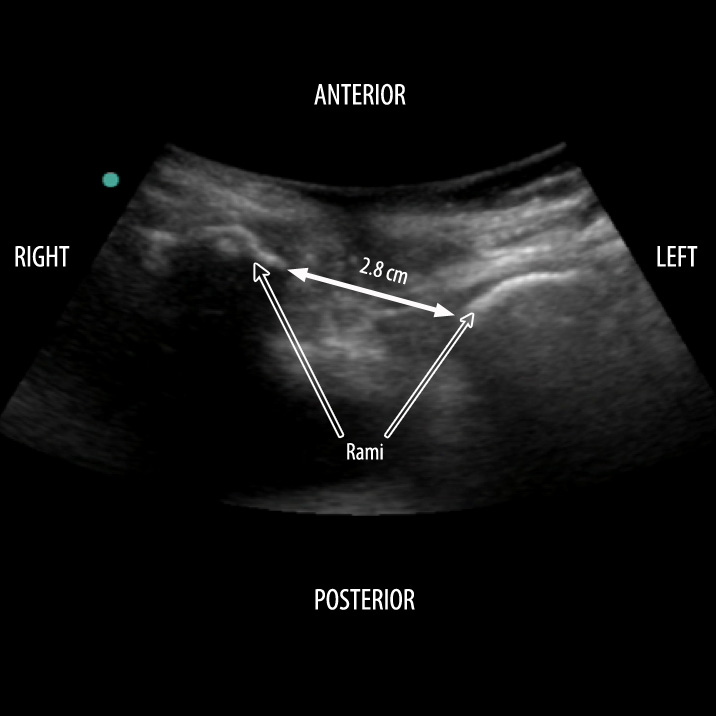Widened symphysis on POCUS
A few of us (@thomas1973, @mikegreenway, @broomedocs) were discussing on Twitter the use of POCUS/EDE to look for a widened symphysis pubis in the setting of major trauma. We were wondering if there is any literature to back that up. I found one article in the EDE database. Bauman et al published their article titled “Ultrasonographic determination of pubic symphyseal widening in trauma: the FAST-PS study” in J Emerg Med back in 2011. The PubMed link is: http://www.ncbi.nlm.nih.gov/pubmed/19926435 See below for an image from the book and a video from the course. See further down for the article summary.
The FAST summary (pun intended!):
– Convenient sample of adult nonpregnant trauma patients
– ~ 6 months in 2006-7
– 23 patients with ultrasound performed to look for a widened symphysis
– 12 scans done by Bauman in ED
– 11 scans done in morgue by 1 of 2 pathologists trained by Bauman
– all 23 patients had an x-ray
– Bauman and pathologists blinded to x-ray but not otherwise blinded to cases
– scans done with linear probe in transverse plane
– 25 mm considered wide
– 100% sensitivity and specificity for calling the scan positive or negative using the 25 mm cutoff
– two cases of disagreement by measurement criteria of being > 2 SDs different, US vs XR: one case where the XR was much wider than on POCUS >>> trickier case where the symphysis was wider than the 38 mm probe. Other case had a superior pubic ramus fracture with a displaced pubic tubercle. In both cases, the US still correctly classified patients as positive or negative based on 25 mm cutoff.
– the 4 cases with a widened symphysis had a mean width of 32.4 mm on ultrasound and 36.5 mm x-ray whereas the mean width in the other 19 (normal) cases was 4.4 mm on ultrasound and 4.6 mm on x-ray [wide gap (!) between wide and normal cases]
The Last Wave…
– this small study suggests that POCUS is accurate for widened symphysis; easy too!
– POCUS expedites care: quicker recognition with POCUS of severe pelvic fracture >>> leads to earlier use of binder
– authors suggest when FAST scan negative but patient hypotensive, widened symphysis raises suspicion for retroperitoneal hemorrhage often not seen with POCUS [Brilliant!]
– authors also suggest prehospital use could expedite binder use and triage to appropriate trauma centre
– consider abdo probe instead of linear for wider view







